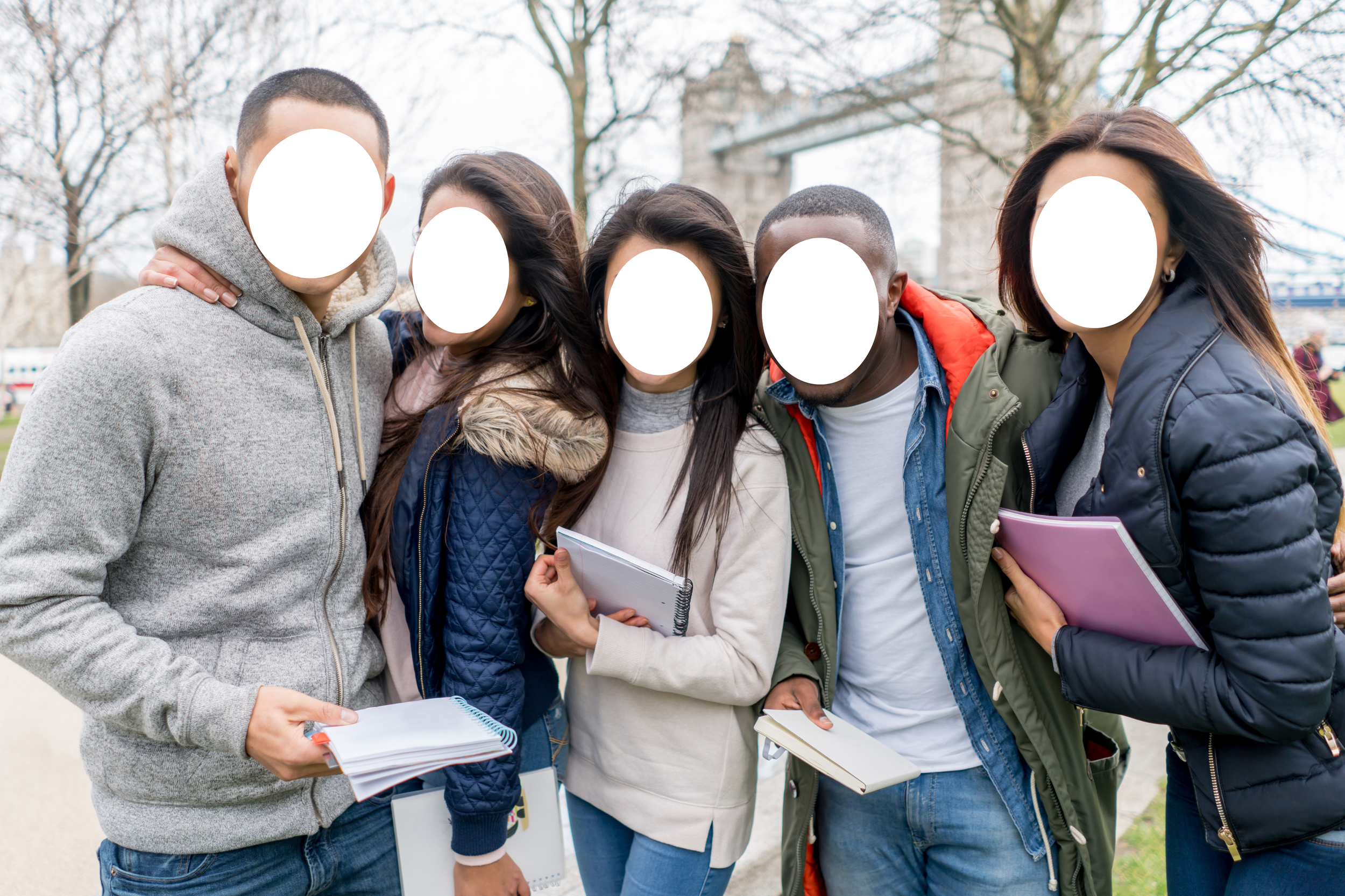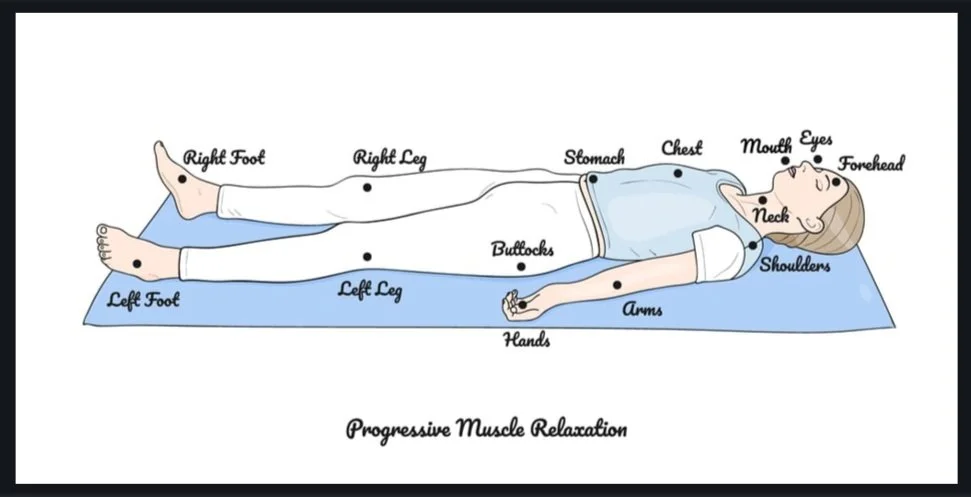Navigating a Faceless World
“Being face blind means living in a world full of strangers…It’s actually a source of constant anxiety,” writes The Washington Post’s face-blind writer, Sadie Dingelder.[1] For people with prosopagnosia, or face blindness (a rare neurological disorder affecting nearly 3% of the population), social situations are complicated to navigate as the brain’s facial recognition system is flawed.[2] In humans, the face serves as a reminder for many memories of the identity of a person: such as their favorite food and their hobbies. When someone’s brain does not properly process this key component of social behavior, social anxiety quickly results. Prosopagnosia not only affects an individual's ability to recognize faces but also poses significant mental health challenges, impacting social interactions, self-esteem, and emotional well-being.
Being face blind leads to an impairment in the ability to form identities, while other forms of identification (i.e., non-facial) are relied upon. Prosopagnosia tends to go relatively unnoticed not only because of its rarity but also because those who have it are skillful at working around their disability[3] or hiding it. Additionally, recruitment for research on the subject becomes difficult, as those who have it may not always be aware if they have grown accustomed to having this deficit.[4] Additional research into prosopagnosia will provide vast opportunities to learn more about the social-cognitive disorders and mechanisms of the brain (such as autism spectrum disorder).
What is Face Blindness?
The main purposes of the brain’s visual facial recognition system revolve around sorting socially-meaningful information based on familiarity, attractiveness, and emotion.[5] Lopatina et al. (2018) note that face recognition impairment has been found to be associated with problems with neurons in the temporal lobe and/or the fusiform face area, particularly in the right middle fusiform gyrus.[6] Associations made with these areas are activated with other brain areas in forming/retrieving memories (the hippocampus) and emotion (the amygdala), establishing the interaction between facial recognition and social operation.[7] Essentially, visual information about faces cannot be translated into meaning. Additionally, face-selective neurons found in the amygdala support the notion that the brain uses facial recognition for emotionally salient, or meaningful stimuli.[8] The own-race bias of having better familiarity/encoding for faces of one’s own ethnicity rather than external ones can also be attributed to the brain’s facial recognition system.[9] When this system in the fusiform face area is impaired in individuals with prosopagnosia, so are the subsequent social processes. Prosopagnosia falls into two forms:[10]
1. Associative Prosopagnosia - One can perceive a face normally, but meaning cannot be applied. Even if the person is familiar, they can only be recognized in other ways (e.g., the sound of their voice, the way they walk).
2. Apperceptive Prosopagnosia - Faces are abnormally perceived and their facial expressions or other non-verbal cues cannot be recognized.
Causes for prosopagnosia can be related to genetic variants,[11] stroke, traumatic brain injury, tumors or some neurodegenerative diseases.[12] Prosopagnosia can often be found in individuals with autism (ASD) and Asperger’s Syndrome due to similar cognitive-emotional processes being affected.[13] Due to the similarity of brain areas and social behaviors affected by these neurological disorders, research targeting prosopagnosia has led to a multitude of information on the topic that augments our understanding of neural development and socially-debilitating disorders.
The Emotional Toll
Davis et al. (2010) found that social anxiety (fears related to social rejection and social impressions) can stem from not only an inability to recognize facial expressions, but also from that of facial identity.[14] With impaired facial identification, those with prosopagnosia experience high social stress and anxiety in situations that critically involve communication, such as with family, at work and in public settings. The impairment can be so socially debilitating that it interferes with self-esteem and emotional well-being, resulting in difficulties in forming relationships and feelings of social isolation.[15] Having face blindness may also lead to avoidance of socially-engaging situations as a coping mechanism, which can even be considered a phobia in extreme cases.[16] Dalrymple et al. (2014) note that this deficit can begin early in life, as children who experience developmental prosopagnosia (DP) report discomfort and distress.[17] Guyer et al. (2010) add that emerging depression is also associated with facial memory deficits.[18]
Coping Strategies and Treatment
Often, those with face blindness will develop coping strategies to alleviate daily challenges. Dalrymple et al. (2014) found that strategies to mitigate distress in children included asking a person’s name and remembering non-facial elements of a person’s appearance such as jewelry or hair.[19] Behavioral strategies like this are employed in face-blind-oriented training to facilitate the memory of people’s facial shapes and features.[20] These memory practices cannot cure prosopagnosia but can provide ways for individuals to adapt to social environments that require identification, thereby reducing social stress.[21] Lopatina et al. (2018) and Bate et al. (2014) also found that administering oxytocin (a hormone that facilitates human bonding)[22] can alleviate difficulties with social communication - some effectiveness was also noted in facilitating facial recognition in people with social behavioral deficits.[23,24] In addition, psychotherapeutic modalities such as cognitive behavioral therapy (CBT) may be utilized alone or in conjunction with anti-anxiety medication to mitigate the effects of social anxiety.[25]
This rare condition provides important insight into connections between the brain and social behavior. While the deficits in the brain associated with face blindness are not curable, an effort to develop identification strategies will help those with facial recognition difficulties in reducing high stress and anxiety when interacting with other people.
If one feels as though they are experiencing symptoms of prosopagnosia (face blindness) or forms of social anxiety, please reach out to a licensed mental health professional (e.g., a psychotherapist, psychologist or psychiatrist) for guidance and support.
Contributed by: Phoebe Elliott
Editor: Jennifer (Ghahari) Smith, Ph.D.
References
1 Dingfelder, S. (2019, August 21). My Life With Face Blindness. The Washington Post Magazine. https://www.washingtonpost.com/news/magazine/wp/2019/08/21/feature/my-life-with-face-blindness/
2 Ibid.
3 Ibid.
4. Ibid.
5. Lopatina, O. L., Komleva, Y. K., Gorina, Y. V., Higashida, H., & Salmina, A. B. (2018). Neurobiological Aspects of Face Recognition: The Role of Oxytocin. Frontiers in Behavioral Neuroscience, 12, 399601. https://doi.org/10.3389/fnbeh.2018.00195
6 Ibid.
7 Ibid.
8 Ibid.
9 Blandón-Gitlin, I., Pezdek, K., Saldivar, S., & Steelman, E. (2014). Oxytocin eliminates the own-race bias in face recognition memory. Brain Research, 1580, 180-187. https://doi.org/10.1016/j.brainres.2013.07.015
10 Cleveland Clinic. (2022, July 7). Prosopagnosia (Face Blindness). https://my.clevelandclinic.org/health/diseases/23412-prosopagnosia-face-blindness
11 Ibid.
12 National Institute of Neurological Disorders and Stroke. (2023) Prosopagnosia. https://www.ninds.nih.gov/health-information/disorders/prosopagnosia#:~:text=What%20is%20prosopagnosia%3F,and%20%E2%80%9Clack%20of%20knowledge.%E2%80%9D
13 Ibid.
14 Davis, J. M., McKone, E., Dennett, H., & Palermo, R. (2010). Individual Differences in the Ability to Recognise Facial Identity Are Associated with Social Anxiety. PLoS ONE, 6(12). https://doi.org/10.1371/journal.pone.0028800
15 Ibid.
16 Davis et al. (2010)
17 Dalrymple, K. A., Fletcher, K., Corrow, S., S. Barton, J. J., Yonas, A., & Duchaine, B. (2014). “A room full of strangers every day”: The psychosocial impact of developmental prosopagnosia on children and their families. Journal of psychosomatic research, 77(2), 144. https://doi.org/10.1016/j.jpsychores.2014.06.001
18 E. Guyer, D. A., R. Choate, M. V., J. Grimm, D. K., S. Pine, D. D., & Keenan, D. K. (2011). Emerging depression is associated with face memory deficits in adolescent girls. Journal of the American Academy of Child and Adolescent Psychiatry, 50(2), 180. https://doi.org/10.1016/j.jaac.2010.11.008
19 Dalrymple et al. (2014)
20 Cleveland Clinic
21 Ibid.
22 Jones, C., Barrera, I., Brothers, S., Ring, R., & Wahlestedt, C. (2017). Oxytocin and social functioning. Dialogues in clinical neuroscience, 19(2), 193–201. https://doi.org/10.31887/DCNS.2017.19.2/cjones
23 Lopatina et al. (2018)
24 Bate, S., Cook, S. J., Duchaine, B., Tree, J. J., Burns, E. J., & Hodgson, T. L. (2014). Intranasal inhalation of oxytocin improves face processing in developmental prosopagnosia. Cortex, 50, 55-63. https://doi.org/10.1016/j.cortex.2013.08.006
25 Johns Hopkins Medicine. (n.d.) Phobias. www.hopkinsmedicine.org/health/conditions-and-diseases/phobias




